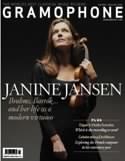Texte paru dans: / Appeared in: |
|
|
Outil de traduction (Très approximatif) |
|
|
Reviewer:
David Vickers Jerónimo Francisco de Lima (1741-1822) was sponsored by Joseph I of Portugal to study for six years in Naples at the Conservatorio di S Onofrio a Capuana. Upon his return to his native Lisbon he composed serenatas and operas for the royal court. The city’s opera house had not been rebuilt after the catastrophic earthquake of 1755 but musical entertainments were performed in various palaces, including the court theatre at Salvaterra de Magos (the winter palace where the royal family spent each carnival season).
Vasco Negreiros directs what appears to be the first-ever recording dedicated to Lima’s music, which has clear traces of the Neapolitan school (eg Jommelli) and occasional hints of Haydnesque charisma. The strings of Concentus Peninsulae can sound acerbic and these performances are sometimes rough and ready, but I enjoyed the bucolic oboes and bassoon contributions to the Sinfonia from Teséo (1783). From the same opera, three set pieces for the spiteful sorceress Medea are sung with limpid melodic shaping, tasteful embellishments and theatrical conviction by Monika Mauch; Medea’s conflicting feelings of heartbreak and thirst for vengeance are brilliantly captured in the multifaceted accompanied recitative that leads into ‘Dall’a speme, dall’amore’ (featuring dynamic solo horn flourishes).
Bold fanfares for trumpets and horns set the scene for a military assembly on the beach in the conclusion to the Sinfonia to Enea in Tracia (1772), whereas there are witty musical irregularities in the first part of the Sinfonia to the comedy Lo spirito di contradizzione (1781). The libretto’s scene description of a ship beset by thunder and lightning during the end of the Sinfonia to La vera costanza (1785) offers an opportunity for members of the stage company Antiqua Escena to provide tempestuous sound effects made by replicas of historical stage machines. Albeit lopsided, this programme achieves its primary objective by indicating that Lima’s music merits further attention.
|
|
|
|
|
|
Cliquez l'un ou l'autre
bouton pour découvrir bien d'autres critiques de CD |
|




